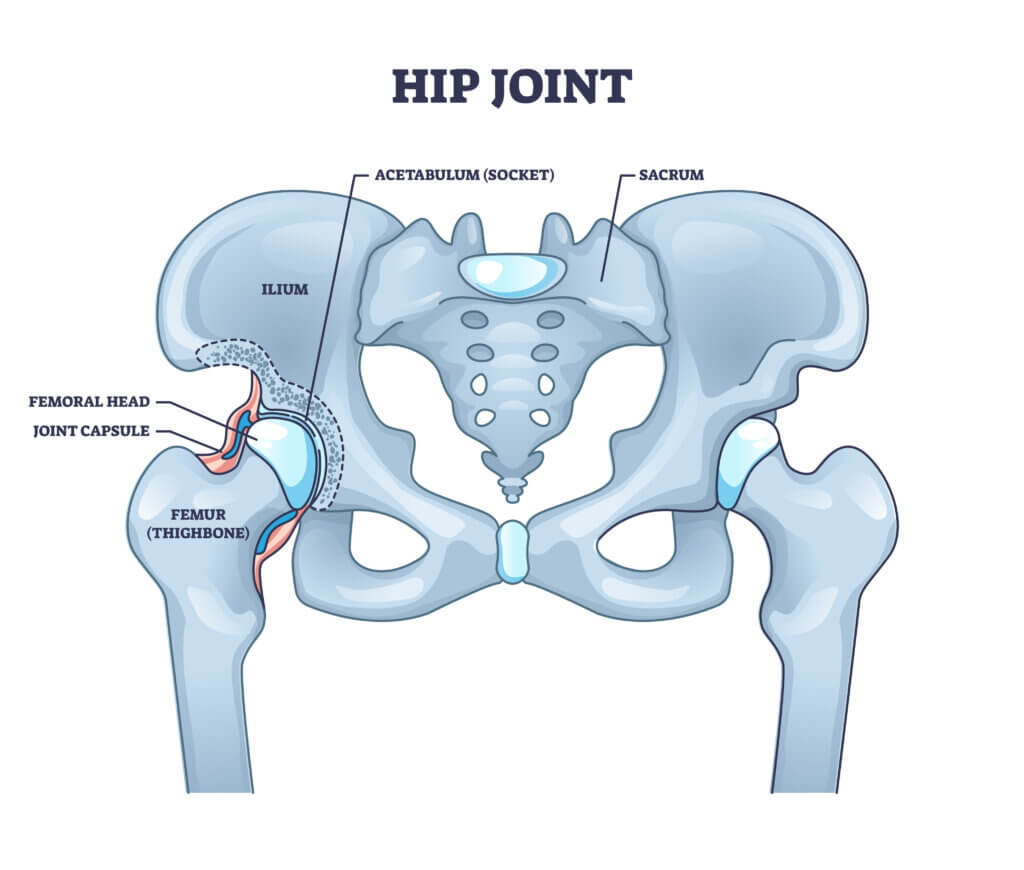How will you take your next step?
Hip Anatomy:
The hip joint is classified as a ball and socket joint. As the name suggests, the joint is compromised of two bones [Femur and Pelvis] with one bone exhibiting a ball-shaped head [Femur] which fits snuggly into the cup shape of the pelvis. The hip joint within our body plays a primary role in connecting the pelvis to the lower extremities, stabilising the body and allowing the lower extremities to weightbear.
Muscles:
There are 22 muscles which support and stabilise each hip joint allowing for 360 degrees of movement. The hip has the ability to move within 6 varying planes of movement: Flexion, Extension, Abduction, Adduction, Internal Rotation and External Rotation.
Hip Biomechanics:
Whilst standing in an upright position, each hip joint has a total of one-third of the bodyweight that it must support.
Equation for 1/3 of Bodyweight: Total bodyweight minus weight of the legs
When standing on one leg, the supporting leg hip joint must support forces up to at least three times the body’s weight.
Centre of gravity is a hypothetical point where the entire mass of the body is concentrated in which gravity acts upon. In a double leg stance, the centre of gravity falls equally between both hip joints. In a single leg stance this centre of gravity typically deviates towards the unsupported leg requiring the muscles of the supporting leg to stabilise the body. The abductor muscles of the hip play a primary role in stabilising the hip of the supporting leg; the literature suggests that these muscles must produce up to 3x the individual’s bodyweight to stabilise the joint.


The Importance of returning to the ideal gait pattern:
As previously mentioned, a shift in the body’s centre of gravity applies large amounts of force through the hip joint. Research has identified individuals with hip complications [pathology, recent surgery, knee pathology], typically shift their centre of gravity to the affected hip ultimately creating further problems with gait deviation, secondary hip pathologies within the non-affected hip and muscle imbalances. It is imperative that individuals shift this centre of gravity to sit equally between each hip joint.
The purpose of walking aids such as the cane:
Ambulatory assistive devices, also known as walking aids, are utilised to help individuals with rehabilitating their gait pattern by providing external stability and balance whilst mobilising independently . The devices are designed to return the individuals centre of gravity to the middle of the hips and transfer the amount of force travelling through the supporting leg’s hip to the upper limb; research indicates the walking cane has the ability to reduce up 50% of the load on the hip [reducing the 3x bodyweight on the hip to 1.5x the bodyweight].
A miscalculation in ambulation resulting in a trip or stumble can place up to 8x the bodyweight through the hip joint.
